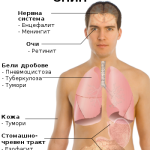Mental health articles
OF mental health care and mentally ill
social phobia clinical features of Epidemiology
Social anxiety and reports of shyness in general populations are particularly common; they occur in around 40% of college students. In addition, social anxiety is a common accompaniment of all of the anxiety disorders. Based on DSM-III-R criteria, social phobia has a lifetime prevalence of 13.3% in the general adult population and a point prevalence of around 2–4% in adolescents. Sex Distribution.Both epidemiological and questionnaire studies of the general population reported higher levels of social anxiety and social phobia in females than males. Yet, clinical studies regularly report a relatively equal gender distribution or even a preponderance of males. It is likely that Western cultural factors result in greater interference from social avoidance for males than for females, and result in a greater proportion of socially anxious males who seek treatment. Onset.
Studies reported signs of onset for social phobia that range from early to late adolescence, and the most common consensus is that social phobia begins, on average, in late childhood or early adolescence. Nevertheless, extreme shyness and social reticence can be seen by the time a child is 2 or 3 years of age, and many people report shyness for as long as they can recall. As with GAD, the onset is generally gradual, and clinically, many social phobics report that they cannot specifically remember the beginning of their symptoms. However, there are certainly some social phobics who report specific traumatic experiences before the onset of their disorder. It may be that these latter individuals are more likely to develop a fear of a few circumscribed situations rather than a broad range of situations (designated as ‘‘generalized social phobia’’ in the DSM-IV).
Post Footer automatically generated by wp-posturl plugin for wordpress.
Tags: clinical, epidemiology, social phobia
Recent Posts
Recent Comments
Archives
- July 2024
- October 2023
- December 2020
- October 2020
- September 2020
- August 2020
- July 2020
- June 2020
- May 2020
- April 2020
- March 2018
- November 2017
- October 2017
- September 2017
- August 2017
- July 2017
- June 2017
- May 2017
- April 2017
- March 2017
- February 2017
- January 2017
- December 2016
- November 2016
- October 2016
- September 2016
- August 2016
- July 2016
- June 2016
- May 2016
- April 2016
- March 2016
- February 2016
- January 2016
- December 2015
- November 2015
- October 2015
- September 2015
- August 2015
- July 2015
- June 2015
- May 2015
- April 2015
- March 2015
- February 2015
- January 2015
- December 2014
- November 2014
- October 2014
- September 2014
- August 2014
- July 2014
- June 2014
- May 2014
- April 2014
- March 2014
- February 2014
- January 2014
- December 2013
- November 2013
- October 2013
- September 2013
- August 2013
- July 2013
- June 2013
- May 2013
- April 2013
- March 2013
- February 2013
- January 2013
- December 2012
- November 2012
Categories
Tags
 Mental health articles
Mental health articles
- 5 Simple Tips to Boost Your Mental Health and Prevent Mental Illness
- Stress Less: Simple Strategies to Keep Burnout at Bay
- Unmasking the Silent Predator: Understanding Depression
- generalized anxiety disorder possible causes
- acute stress disorder nursing interventions
- acute stress disorder nursing diagnosis
- primary treatment for acute stress disorder
- test for acute stress disorder
- acute stress disorder signs and symptoms
- acute stress disorder causes







Leave a Reply